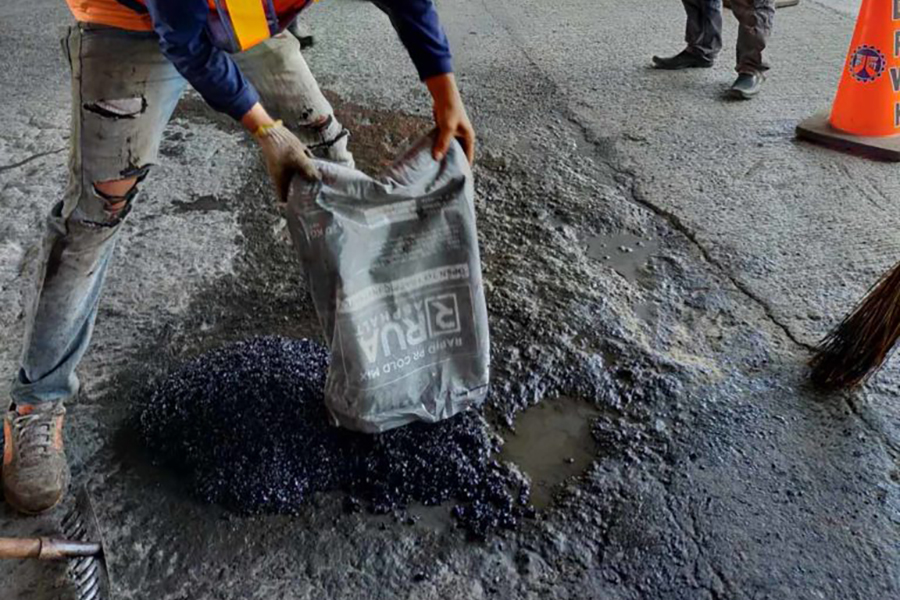Make Best Use Of Area Performance with Hot Mix Asphalt Angled Parking Lot Solutions
Opening the Secrets of Hot Mix Asphalt Modern Technology
Checking out the midsts of hot mix asphalt modern technology uncovers a world where meticulous processes and specific solutions merge to form our roadways and infrastructure. The fusion of fillers, aggregates, and binders isn't just a construction job however a calculated orchestration of sturdiness and performance. As we peer into the elaborate dance of parts, a tapestry of resilience and sustainability unravels. What exists under this surface area of asphaltic proficiency, and what keys wait to be revealed in the realm of paving developments?
Importance of Hot Mix Asphalt
Hot Mix Asphalt plays a critical role in contemporary infrastructure growth as a result of its longevity and cost-effectiveness. As one of the most commonly made use of leading material for roadways, freeways, and vehicle parking whole lots, Warm Mix Asphalt supplies a range of benefits that contribute to its importance in building projects. One key advantage is its capability to endure rush hour lots and rough weather, supplying a durable and reliable surface for transport networks. In Addition, Hot Mix Asphalt is cost-efficient in both first building and construction and long-term maintenance, making it a recommended option for lots of facilities projects.
The resilience of Warm Mix Asphalt stems from its structure, which includes accumulations, binder, and filler materials that are very carefully selected and blended to meet certain efficiency demands. Overall, the value of Hot Mix Asphalt in infrastructure growth can not be underrated, as it proceeds to be a foundation of modern building and construction methods.
Components of Asphalt Mixes
The make-up of asphalt mixes contains meticulously picked accumulations, binder, and filler materials that are critical for accomplishing details performance needs. Aggregates are the main component of asphalt blends, supplying stamina and stability. These accumulations can be natural, such as crushed rock or crushed stone, or artificial, like recycled products from old sidewalks. The binder, normally bitumen or asphalt concrete, holds the aggregates together and gives flexibility and toughness to the mix. The choice of the binder is crucial as it directly influences the mix's performance in various weather conditions. Fillers, such as moisturized lime or Rose city concrete, are used to boost the mix's workability and aging resistance. Angled Parking.
The mix and percentage of these elements play a significant duty in figuring out the high quality and performance of the asphalt mix. Engineers carefully develop the mix to fulfill certain requirements, taking into consideration factors like web traffic volume, environment problems, and pavement life expectancy. Proper choice and harmonizing of accumulations, binder, and fillers are crucial for creating resilient, lasting asphalt sidewalks.
Mixing and Production Strategies

When the aggregates are selected, the binder, commonly asphalt cement, is added to bind the products together. The binder's quality and amount significantly affect the mix's resistance, flexibility, and stamina to ecological aspects. Additionally, fillers like hydrated lime or Rose city concrete might be integrated to boost certain attributes of the asphalt mix, such as its workability or moisture resistance.
Throughout production, the aggregates and binder are warmed, normally in between 250-325 ° F(121-163 ° C ), to promote blending and ensure correct coating of the accumulations. The mixing process must be comprehensive to accomplish an uniform combination that promotes the wanted performance features of the asphalt. Various strategies, such as set mixing or drum blending, are utilized to accomplish regular and high-grade asphalt blends for construction projects.
Factors Affecting Asphalt Performance
Variables influencing asphalt efficiency include a variety of variables that impact the toughness, long life, and overall quality of asphalt sidewalks. One key factor is the high quality of products made use of in the asphalt mix.

Environmental conditions additionally influence asphalt efficiency. Temperature variations, dampness seepage, and website traffic loads can all affect the structural integrity of the pavement. Style factors to consider, such as pavement thickness and drain, are necessary in making certain the long-term performance of the asphalt pavement. By thoroughly considering these designers, factors and contractors can enhance asphalt efficiency and improve the life span of sidewalks.
Lasting Practices in Asphalt Technology

In addition, the development of hop over to here warm-mix asphalt (WMA) modern technologies has gained traction over the last few years. WMA permits for the manufacturing and positioning of asphalt mixes at reduced temperatures compared to conventional hot-mix asphalt, resulting in reduced power intake and greenhouse gas discharges. The usage of porous asphalt mixes can aid reduce stormwater overflow concerns by permitting water to penetrate via the sidewalk and right into the ground, advertising natural water purification and reenergize processes. By implementing these lasting techniques, the asphalt industry can add to building a more ecologically pleasant and durable framework network.
Verdict
Finally, warm mix asphalt technology plays an important duty in modern framework growth due to its resilience and cost-effectiveness. By meticulously balancing elements, employing proper mixing techniques, and thinking about numerous aspects, engineers can develop top quality asphalt mixes that hold up against rush hour tons and rough climate condition. Accepting lasting methods, such as using recycled materials and warm-mix innovations, better enhances the ecological kindness of asphalt technology.
Blending and production methods in warm mix asphalt technology entail the precise combination and handling of accumulations, binder, and fillers to develop a high-performance and sturdy asphalt mix.Aspects affecting asphalt performance incorporate an array of variables that influence the sturdiness, longevity, and total high quality of asphalt sidewalks. Lasting methods in asphalt technology include different campaigns intended at minimizing the environmental effect of asphalt production and paving processes. By incorporating redeemed asphalt sidewalk (RAP) and recycled asphalt roof shingles (RAS) right into new asphalt mixes, the sector can considerably lower the intake of raw materials and power, while likewise decreasing garbage dump waste.
WMA permits for the production and placement of asphalt blends at reduced temperatures contrasted to conventional hot-mix asphalt, resulting in minimized power consumption and greenhouse gas emissions.